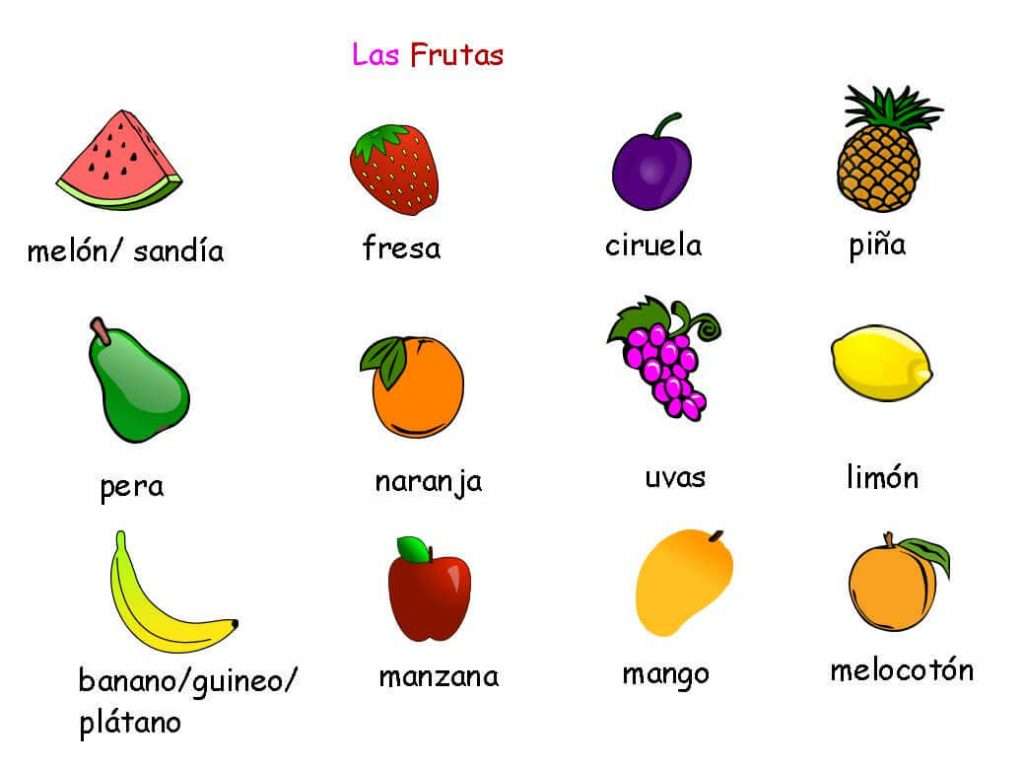The Spanish language is one of the most useful languages that your kids should know how to speak. You may be thinking that your child is too young to start learning a foreign language, but research has shown that it’s actually best to start teaching kids a second language from a young age. Fortunately, there are plenty of fun and effective ways to teach your kids Spanish words.
One approach is to create a Spanish word of the day and make it a part of your child’s daily routine. You can also look for Spanish-language books, movies, and apps that are specifically designed for kids. With a little effort, you’ll be surprised at how quickly your kids pick up Spanish words.
List of Spanish words for kids

– niño/a (boy/girl)
– papá (dad)
– mamá (mom)
– abuelo/a (grandfather/grandmother)
– tío/tía (uncle/aunt)
– primo/a (cousin)
– hermano/a (brother/sister)
– amigo/a (friend)
Learning Spanish words for kids can be a fun and rewarding experience for both children and adults. By teaching kids Spanish words, we can help them develop an early appreciation for another language and culture.
Basic Conversation
Conversational skills are important for everyone, but especially for children. Being able to hold a conversation is a key social skill that will help your child in school and in their future life. You can help your child develop their conversational skills by teaching them some basic Spanish words and phrases. Start with simple greetings and introductions, and then move on to more complex concepts like asking questions and carrying on a conversation. Helping your child to develop strong conversational skills will give them a valuable tool that they can use for the rest of their lives.
Family Members

One of the most important things in life is family. Family members are the people who are always there for you, no matter what. They’re the ones who love you unconditionally and support you through thick and thin. Whether you have a large or small family, each member plays an important role in your life.
In Spanish, there are different words for “family members” depending on whether they’re related to you by blood or marriage. For example, “padres” (parents) are your mother and father, while “abuelos” (grandparents) are your maternal or paternal grandparents. “Hermanos” (siblings) are your brothers and sisters, while “tíos” (uncles) and “tías” (aunties) are your mother’s or father’s brothers and sisters. “Primos” (cousins) are the children of your uncles and aunts.
No matter what language you speak, family members are an essential part of your life. They provide love, support, and encouragement when you need it most.
Animals
These Spanish words for animals are perfect for kids learning spanish. The list includes common animals such as el gato (cat), el perro (dog), and el gallo (rooster). Each word is accompanied by a picture to help with pronunciation. In addition, there are words for less common animals such as la rana (frog), el simbolo (butterfly), and la medusa (jellyfish). By learning these Spanish words, kids will be able to talk about the animals they see in their everyday lives as well as those they encounter on vacation. With practice, they’ll be able to have conversations about all kinds of animals in spanish.
Colors
Colors are a fundamental part of our lives and Spanish words for colors are no different. Spanish words for colors help us to identify and describe the world around us. In Spanish, some colors have multiple words that can be used depending on the shade or hue. For example, the word “rojo” can be used to describe a deep red, while “rosa” is used to describe a light pink. Learning Spanish words for colors is a great way to improve your Spanish vocabulary and Spanish grammar. Moreover, it can also be a fun way to learn about Spanish culture and Spanish traditions. So start learning Spanish words for colors today and you’ll be able to see the world in a whole new light!
Foods

Spanish words for kids can help them learn about different foods. By teaching them the names of various fruits, vegetables, and other items, they can develop a better understanding of nutrition and where their food comes from. Additionally, learning Spanish words for kids can also help them to appreciate different cultures and cuisines. For example, they may be exposed to new flavors and ingredients that they would not otherwise encounter. As a result, learning Spanish words for kids can be a fun and educational experience.
In recent years, there has been an increased focus on the environment. This is due in part to the effects of climate change, which are becoming more and more evident. One way to help protect the environment is to teach children about the importance of taking care of it. This can be done in a number of ways, such as by teaching them about recycling or conserving energy. In addition, you can also teach them some simple Spanish words for environmental protection. By doing this, you’ll help instill a sense of responsibility in children and help them understand the importance of taking care of our planet.
Toys
Spanish is a beautiful language spoken by around 500 million people worldwide. Learning Spanish can be a great way for kids to connect with their heritage, or simply to learn about a different culture. And what better way to learn a new language than through play? Toys are a great way to help kids learn new words and concepts. There are many toys on the market designed specifically for Spanish-language learners. These toys can help kids to build their vocabulary and learn about grammar in a fun and interactive way. With so many benefits, it’s no wonder that Spanish toys are becoming increasingly popular. So if you’re looking for a way to help your child learn Spanish, be sure to check out the wide variety of Spanish-language toys available.
Home Vocabulary
Below are some Spanish words for kids that can help them around the house. With Spanish being such a widely spoken language, it’s beneficial for kids to learn some key Spanish words.
– ¿Me ayudas? – Can you help me?
– ¿Dónde está mi…? – Where is my…?
– ¡Lávame! – Wash me!
– ¡Por favor! – Please!
– ¡Gracias! – Thank you!
– Yo limpiaré. – I will clean.
– Tengo que hacer mis tareas. – I have to do my homework.
– Necesito ir al baño. – I need to go to the bathroom.
Clothes
Anyone who has gone through an intensive language learning program knows that one of the best ways to learn a new language is to immerse yourself in it as much as possible. One way to do this is to learn the words for everyday objects, such as clothes. In Spanish, for example, the word for “shirt” is camisa, while the word for “pants” is pantalones.
By learning these words, you can start to think in the new language and build up your vocabulary. Furthermore, once you know the words for basic items like clothes, you can start to put together simple sentences. For instance, you might say “Tengo una camisa azul” (I have a blue shirt). As you can see, learning the Spanish words for clothes can be a helpful step in mastering the language.
School Vocabulary
It is never too early to start learning a second language, and Spanish is a great choice for kids. Not only is it one of the most widely spoken languages in the world, but it also has a lot of common words with English. As a result, Spanish can be a great way for kids to learn about other cultures while also expanding their vocabulary. Here are some essential Spanish words for kids:
-Escuela: school
-Maestro: teacher
-Alumno: student
-Libro: book
-Lápiz: pencil
-Cuaderno: notebook
-Tiza: chalk board
-Pizarra: blackboard
Action Verbs
Spanish is a beautiful language with many colorful expressions. One way to make your Spanish sound more natural is to use action verbs. These are words that describe what you are doing, and they are an essential part of any sentence. Here are some common action verbs in Spanish:
– bailar: to dance
– cantar: to sing
– correr: to run
– dibujar: to draw
– escribir: to write
– leer: to read
– nadar: to swim
– saltar: to jump
– tocar: to play (an instrument)
As you can see, action verbs are a great way to add interest and variety to your Spanish sentences. So the next time you’re feeling stuck, try using one of these verbs to liven up your conversation!
Environment
La naturaleza. El medio ambiente. The environment. These are all words that we use to describe the world around us, but what exactly do they mean? In Spanish, the word “medio ambiente” can be translated as “the middle ground” or “the in-between.” It’s a word that encompasses both the natural world and the built environment. In other words, it’s everything that surrounds us and makes up our planet.
The environment is important for many reasons. It provides us with the air we breathe, the water we drink, and the food we eat. It also helps to regulate the Earth’s climate and supports a huge diversity of plant and animal life. Unfortunately, human activity is having a negative impact on the environment.
We’re polluting the air and water, cutting down forests, and causing species to go extinct. But it’s not too late to make a change. By raising awareness about environmental issues and making small changes in our daily lives, we can protect our planet for future generations.
Do you want to learn Spanish in a short time? At Hispania Academy we have qualified teachers who will give you advice when you need it. Do not wait any longer contact us, we are your best option









